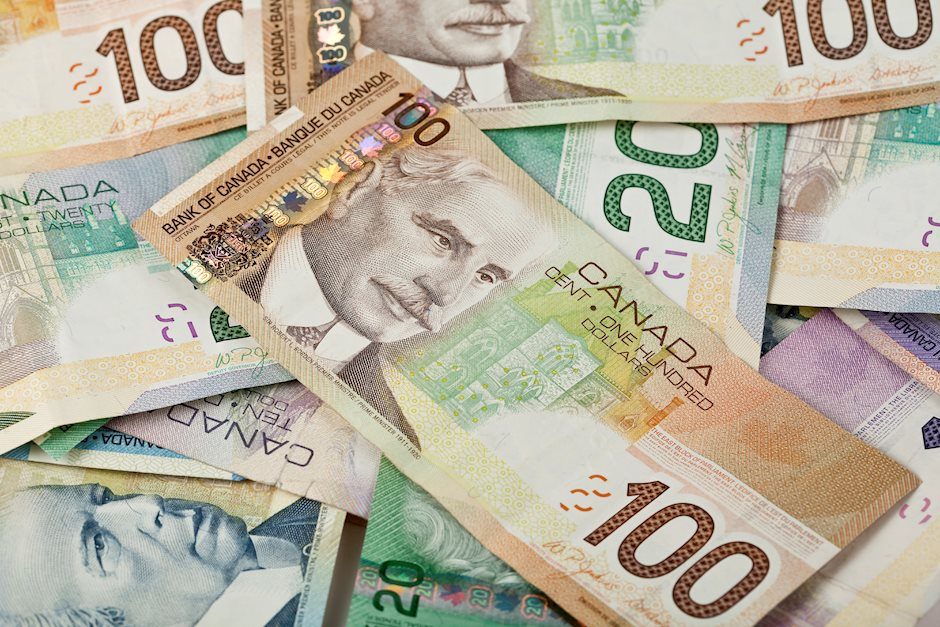USD/CAD holds losses around 1.3800 after retreating from eight-month highs
- USD/CAD edges lower after pulling back from an eight-month high of 1.3849 level.
- The pair’s downside could be restrained as stronger US economic data have reduced the Fed’s rate cut odds for September.
- The Canadian Dollar may struggle as the BoC is expected to continue easing policy in 2024.

USD/CAD breaks its winning streak that began on July 17, trading around 1.3810 during the Asian session on Friday. The pair retreated from an eight-month high of 1.3849, a level recorded on Thursday. This downside of the USD/CAD pair is attributed to the weakening of the US Dollar (USD) ahead of the release of the US Personal Consumption Expenditures (PCE) Price Index for June.
However, the US Dollar may limit its downside as stronger US economic data have reduced some rate cut expectations for September. On Thursday, the US Gross Domestic Product (GDP) for the second quarter (Q2) was stronger than expected. This follows Wednesday’s US PMI data, which indicated a faster expansion in private-sector activity for July, highlighting the resilience of US growth despite elevated interest rates.
The US GDP grew at an annualized rate of 2.8%, adjusted for seasonality and inflation, up from the previous reading of 1.4% and surpassing forecasts of 2%. Additionally, the Composite PMI rose to 55.0 from the previous 54.8 reading, marking the highest reading since April 2022 and indicating sustained growth over the past 18 months.
On the CAD front, the Bank of Canada (BoC) to continue to ease policy after its latest interest rate cut on Wednesday. The BoC lowered interest rates by 25 basis points to 4.5% for the second consecutive meeting on Wednesday, citing progress in reducing inflation.
BoC members emphasized that excess supply and a cooling labor market justified their decision to cut rates, aiming to stabilize consumer prices at 2% by 2025. Financial markets expect one more 25 bps rate cut this year, with nearly 60% odds that the BoC will cut rates again in its September meeting. This may limit the upside of the Canadian Dollar (CAD), underpinning the USD/CAD pair.
Canadian Dollar FAQs
The key factors driving the Canadian Dollar (CAD) are the level of interest rates set by the Bank of Canada (BoC), the price of Oil, Canada’s largest export, the health of its economy, inflation and the Trade Balance, which is the difference between the value of Canada’s exports versus its imports. Other factors include market sentiment – whether investors are taking on more risky assets (risk-on) or seeking safe-havens (risk-off) – with risk-on being CAD-positive. As its largest trading partner, the health of the US economy is also a key factor influencing the Canadian Dollar.
The Bank of Canada (BoC) has a significant influence on the Canadian Dollar by setting the level of interest rates that banks can lend to one another. This influences the level of interest rates for everyone. The main goal of the BoC is to maintain inflation at 1-3% by adjusting interest rates up or down. Relatively higher interest rates tend to be positive for the CAD. The Bank of Canada can also use quantitative easing and tightening to influence credit conditions, with the former CAD-negative and the latter CAD-positive.
The price of Oil is a key factor impacting the value of the Canadian Dollar. Petroleum is Canada’s biggest export, so Oil price tends to have an immediate impact on the CAD value. Generally, if Oil price rises CAD also goes up, as aggregate demand for the currency increases. The opposite is the case if the price of Oil falls. Higher Oil prices also tend to result in a greater likelihood of a positive Trade Balance, which is also supportive of the CAD.
While inflation had always traditionally been thought of as a negative factor for a currency since it lowers the value of money, the opposite has actually been the case in modern times with the relaxation of cross-border capital controls. Higher inflation tends to lead central banks to put up interest rates which attracts more capital inflows from global investors seeking a lucrative place to keep their money. This increases demand for the local currency, which in Canada’s case is the Canadian Dollar.
Macroeconomic data releases gauge the health of the economy and can have an impact on the Canadian Dollar. Indicators such as GDP, Manufacturing and Services PMIs, employment, and consumer sentiment surveys can all influence the direction of the CAD. A strong economy is good for the Canadian Dollar. Not only does it attract more foreign investment but it may encourage the Bank of Canada to put up interest rates, leading to a stronger currency. If economic data is weak, however, the CAD is likely to fall.
Author

Akhtar Faruqui
FXStreet
Akhtar Faruqui is a Forex Analyst based in New Delhi, India. With a keen eye for market trends and a passion for dissecting complex financial dynamics, he is dedicated to delivering accurate and insightful Forex news and analysis.

















